The need for speed
Published on July 29th, 2020
From US Sailing’s One Design Line e-Newsletter, Chris Snow gives a narrative on the importance and methods of tuning your one design boat to improve your results…
I like watching F1 (Formula 1) auto racing on TV. The exotic locations and the technology of the cars fascinates me. Often, the TV will show shots of the crew chiefs and their teams sitting at banks of computer displays monitoring the performance and set up of their cars. These engineers are monitoring things like tire pressure, down force, differential lock, brake pressure and temperature, toe and camber among many other things. They are monitoring anything that will contribute to getting their car across the line first when the race ends.
Like F1, our sport of sailboat racing is wonderfully complex. When racing we deal with: wind and weather, getting a good start, executing tactics, building a team and motivating it to sail well, prepping the boat, feeding the team and the list goes on and on. Good boat speed wins races and in order to have good boat speed your boat (like an F1 car) must be set up to perform. A good basic understanding of sailboat tuning for speed is essential. In the following paragraphs, I’ll give you a good overview of sailboat tuning and how to make your boat perform.
Like a race car, your sailboat has many settings that can be adjusted to affect its performance. Having a solid understanding of the big ones and how they change sailing characteristics puts you on strong footing when competing. The ability to make set up changes to your boat on the fly as conditions change is critical to overall success and a skill most top sailors have developed over the years.
The importance of mast rake and helm
The “helm” of your boat refers to the amount of pull or push on the tiller or wheel when your boat is sheeted in and sailing upwind. Your goal when tuning your boat is to make the helm either neutral or very slight windward helm. Windward helm is the condition that describes when you let go of the tiller or wheel the boat wants to head up into the wind. It is possible for a boat to have leeward helm. This is when the boat bears away from the wind when you let go of the steering. Since sailing upwind with the rudder at any angle offset to the centerline of the boat is added drag our goal is to try and get the helm as neutral as possible.
What determines the helm of your boat? Simply the location of two things in relation to each other. The center of effort (CE) of your sail plan is the exact center of the area of main and headsail (if you have one). The center of lateral resistance (CLR) is essentially the center of the underwater part of your boat including the keel (or centerboard) and rudder. When these two are aligned perfectly on top of each other the boat will have neutral helm. If the CE is aft of the CLR the boat will have windward helm. If the CE is forward of the CLR. The boat will have leeward helm. See Figure 1 for a visual.
If you have ever sailed or attempted to sail a windsurfer you will have experienced first-hand the effect of mast rake. Since a windsurfer does not have a rudder the board must be steered by changing the rake of the mast. If you want to head up into the wind you lean the mast aft. To bear away, you lean the mast forward. Figure 2. shows US Sailing Team windsurfer Pedro Pascual leaning his sail forward in order to bear his board away from the wind.
The rake or angle that your mast sits in your boat when sailing determines the helm. In order to change the helm there are only two things you can change. First is the length of the forestay, a longer forestay increases rake and helm. A shorter forestay decreases rake and therefore reduces helm.
The other thing that you can change, keep in mind all changes must comply with your class’s rules, is the overall length of the mast. Assuming the head stay length stays the same shortening the mast will increase rake in the mast, lengthening the mast will have to opposite effect. A popular boat where is it often necessary to shorten the mast to increase rake is the J/24. The J/24 rules have a maximum forestay length which unless the stock mast is not shortened to minimum cannot be made long enough to give the boat neutral helm. All top J/24s these days have a maximum length forestay and minimum length mast just to get the helm correct.
The importance of shroud tension and spreader angle
After setting the mast rake so the CE and CLR are over each other, the next things that are easily adjustable is the tension on the shrouds (side stays) and the angle of the spreaders. Depending on the type of boat you are sailing you will have anywhere from a single set of shrouds and spreaders up perhaps four set of shrouds and two to three sets of spreaders. Before we get into what adjusting the shrouds and spreaders does let’s talk a little about how your sails get their shape.
All sails get shape from a combination of broadseam and luff curve. Broadseam is the amount of shape that is put into the seams between each pair of panels in your sail. A fuller sail will have more broadseaming and the flatter sail less. Sails also get their shape from luff curve. Luff curve is the amount of curvature added to the front of the sail beyond a straight line drawn from the head to the tack.
When you raise your sail on a mast that is straighter than the amount of luff curve cut into it the difference between the luff curve and the bend of your mast is pushed back into the sail to add shape to it. All mainsails have some degree of positive luff curve. Most jibs actually have a negative luff curve because rather than bending forward in the middle like the mast the headstay sags back towards the mast while sailing. Figures 3 and 4 show the effect of mast bend on mainsail shape. The photo in Figure 5 shows the effect of more or less forestay sag.
As we can see, the amount that our mast bends and our forestay is sagged or straight controls directly the shape of our sails. The two things that control mast bend and forestay sag are spreader angle and shroud tension.
Spreader angle, or the amount that the spreaders sweep back from the side of the mast controls how much or little your mast will ultimately bend. More angle means more bend and vice versa.
Shroud tension is adjusted depending on the conditions. In most cases your shrouds should be tighter the more wind there is. Using a combination of increasing shroud tension (which compresses the mast and adds bend) and the correct spreader angle for your boat you can increase the tension on the forestay and flatten both the mainsail and headsail as the breeze builds, reducing power and making the boat easier to sail. Conversely as the wind drops, easing off on the shrouds will power up the sails by straightening the mast and sagging the forestay giving you more oomph in lighter winds. The diagram here gives an idea of how the shrouds, mast and forestay interact.
A note on prebend
As soon as you start on tuning your boat you will hear the term “prebend” often. Prebend is the static bend in the mast created by a certain shroud tension and spreader angle. It is important because it gives up a baseline check on all our tuning settings. Prebend is checked with the shroud tension set and by holding the main halyard to the gooseneck and seeing how much forward to straight the middle of the mast is. All good sailmakers will specify a base setting for all adjustments and a certain amount of prebend. You can be sure that if the prebend is not a specified amount one of your settings is not correct.
Tuning guides
All the major one-design sailmakers provide tuning guides for their sails. These essentially are cookbooks for how to tune your boat for their sails across the range of conditions. I recommend starting using these settings. The setting in these guides are developed from days of on the water experimentation and input from the best sailors working with that sailmaker. A good tuning guide with provide a “quick tune” chart so you can easily see what settings you should be using for a particular condition.
Putting it all together
When you are ready to tune your boat you’ll want to get some tools together. Here is a suggested list:
• Tension gauge – choose the same one that your tuning guide uses.
• Permanent marker – helpful for marking halyards and direction turnbuckles tighten.
• Tape measure – Use a no stretch one that is long enough for measuring your mast rake.
• Electrical tape – Good for taping cotter pins and ring dings
• Lubricant for turnbuckles – Be sure your turnbuckles are lubed to be able to adjust easily.
• Rig adjusting tools – Whatever tools are needed to adjust your shrouds.
• Tuning guide – Be sure to have this on hand and read thoroughly before starting.
• Waterproof notebook – For noting any setting changes not in the tuning guide.
I highly recommend starting with your sailmaker’s tuning guide. Read it thoroughly before starting and even call to ask questions if there is some part of the process you do not understand. Most sailmakers love to talk tuning. One you have gotten familiar and sailed with the settings in the tuning guide you can experiment on your own by tweaking one setting at a time to come up with the optimal settings for your boat.
For more stories and resources for one design sailors, visit US Sailing’s One Design Central




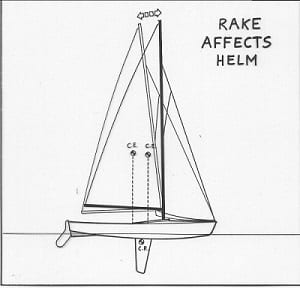

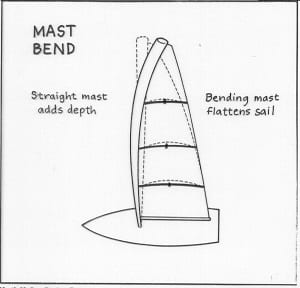
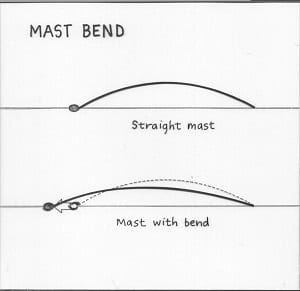
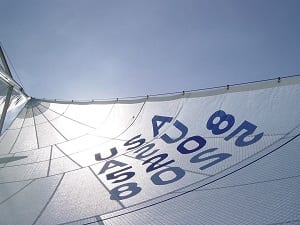
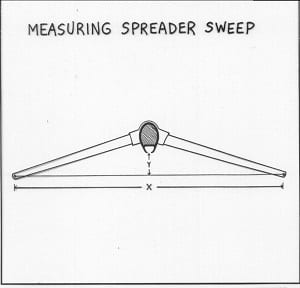
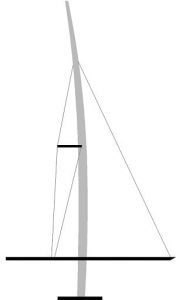
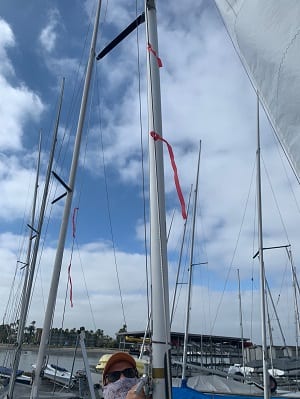
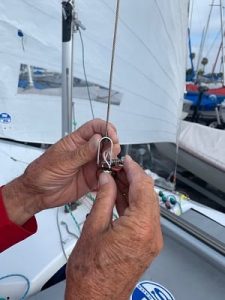
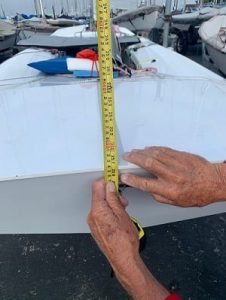





 We’ll keep your information safe.
We’ll keep your information safe.